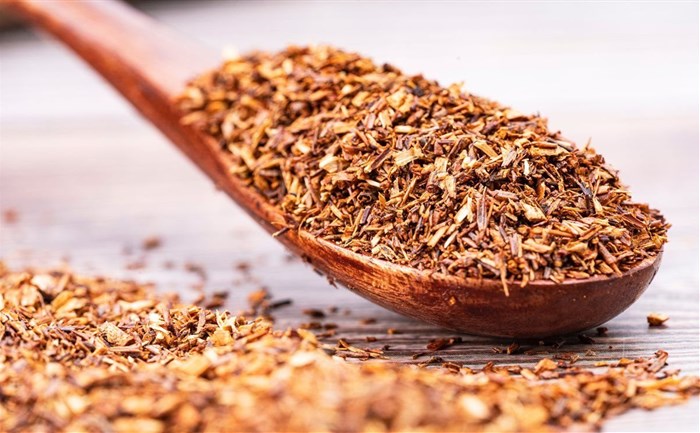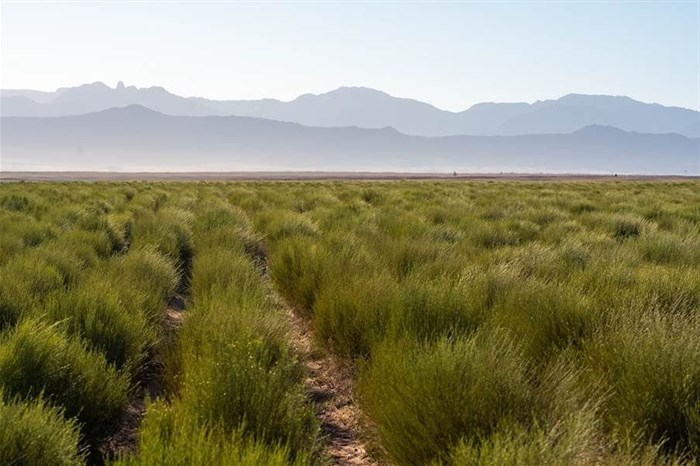
He says while winter typically marks the start of the rooibos planting season, as it requires good soil moisture for germination and regular follow-up rains to flourish, farmers have to time it right. "It’s no good planting new seedlings in waterlogged soil, which is unable to drain. Fortunately, few farmers have started planting new fields as seedlings would have been washed away. With more rain predicted for July, soil moisture levels should remain good, and farmers can still plant as late as August.
"More mature fields are also dependent on winter rain for growth. A balanced interplay between sun and rain ensures a stable and healthy Rooibos yield," he adds.
Bergh says the excessive recent rain is likely to benefit the higher-lying rooibos fields on the mountain slopes where deep, well-drained soil with low clay levels will lead to good growth once temperatures start to pick up.
"Rooibos root systems are usually found at one meter deep so lower-lying fields with shallow soil levels and clay appearing at 60-80 cm deep are negatively affected by the flooding because the soil doesn’t drain well and the excess moisture then causes the plants to die. These fields usually only produce two good harvests and then the plant yield drops radically. Exceptionally cold weather also affects plant growth.
"The greatest challenge will be to control the explosion of weeds after this much rain, or else it becomes impossible to manage."
For now, farmers are embracing the wet conditions and full dams are critical as South Africa faces a possible return of El Niño during the second half of the year. In the past (2015/16), the impact was severe and although climate research experts can’t predict what the coming season will be like, farmers must pre-empt the potential impact. Climate models suggest that in the long term, this type of event will occur more frequently, creating extremely hot and dry conditions.
Bergh says although attempts to grow rooibos outside of its home range have been made in Argentina, the USA, China and Australia, none have succeeded.
"Rooibos only grows in the Cederberg region of the Western Cape, which remains the only part of the world where it is commercially viable. As such, the European Commission has given rooibos the status of a Protected Designation of Origin (PDO) and Geographical Indicator (GI) in the EU register. PDOs recognise the specificity of the country of origin of a product and transparency for consumers around its authenticity. The combination of the Cederberg’s climate, soil and micro-organisms make for a unique terroir, which much like in the wine industry, is known to play a significant role in determining the taste, colour and aroma of a high-quality product."
The entire rooibos production region has always been highly drought affected, due to its Mediterranean-type ecosystem, but mean surface temperature increases in the future are likely to affect the growth and physiology of many plants, including rooibos. Something which the Rooibos industry is keeping a close eye on.

Bergh says climate models consistently predict an average increase of 2.7–3.2 °C in annual temperatures across the Cederberg, whereas projections for precipitation among models vary.
"Winter rainfall anomalies range from decreases of 52 mm to increases of 32 mm. The Model for Interdisciplinary Research on Climate (MIROC) consistently yields the most conservative predictions, because it projects less drastic temperature increases and some winter precipitation increases.
"Model averages for an intermediate future period (2041–2070) indicate Rooibos’ suitability will remain the same in the higher elevation areas of the traditional rooibos production belt. In the western areas along the coast, considerable decreases are projected, especially in the lower-lying regions. Across all scenarios the most significant increases in suitability are expected in the mountainous region toward the south, indicating a general shift southward and to higher altitudes.
"Therefore, rooibos farming in cooler and wetter areas further south are being considered for better growth and higher yields, in the future," he says.